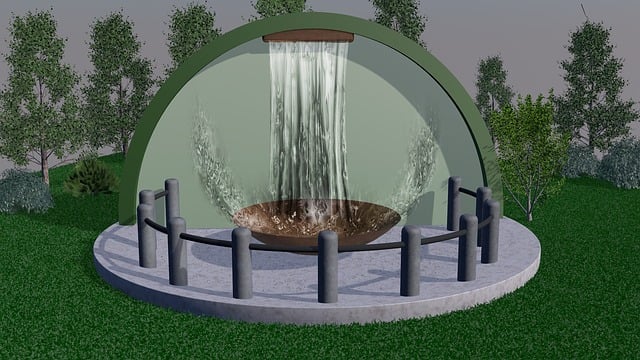In-depth exploration of cold air intake (CAI) systems reveals their dual role in boosting vehicle performance and enhancing driving pleasure through cold air intake sound effects. CAIs redirect intake air for cooler, denser delivery, optimizing combustion and reducing backpressure to produce deeper, more aggressive tones. Strategic intake placement and acoustic treatments, such as sound-absorbing materials, further refine the engine's sound, creating a unique auditory experience that complements improved performance. Enthusiasts are encouraged to experiment with various adjustments to achieve their desired cold air intake sound effects enhancement.
The engine bay, a critical component of any vehicle’s performance, also plays a surprising role in shaping its auditory profile. In this article, we delve into the world of engine bay acoustics and explore how modifications can transform the sound experience. From understanding the fundamentals to practical tips, we uncover the art of enhancing cold air intake (CAI) sound effects, offering insights for car enthusiasts seeking a unique audio twist. Learn how simple adjustments can significantly impact your vehicle’s auditory signature.
- Understanding Engine Bay Acoustics and Its Impact on Sound
- Cold Air Intake (CAI): Enhancing the Audio Experience
- Practical Tips for Optimizing Engine Bay Sound Effects
Understanding Engine Bay Acoustics and Its Impact on Sound

In the engine bay, acoustics play a vital role in shaping the overall sound experience, particularly when it comes to enhancing performance and driver enjoyment. The cold air intake (CAI), a popular modification, is a great example of how adjusting acoustics can make a significant difference. A well-designed CAI not only improves airflow but also contributes to the car’s auditory appeal. By carefully considering the materials and placement of components within the engine bay, sound effects can be optimized, resulting in a more thrilling and distinctive exhaust note.
The impact of these acoustic changes is profound, as they can transform the driving experience. Enhanced acoustics can make the engine’s power and texture more evident, creating a harmonious blend of mechanical precision and auditory delight. This is especially noticeable when combined with other modifications, such as performance exhaust systems, further elevating the car’s unique character. Thus, understanding and manipulating engine bay acoustics is an art that can unlock new dimensions in automotive enjoyment, all while potentially improving overall vehicle performance.
Cold Air Intake (CAI): Enhancing the Audio Experience

Cold Air Intake (CAI) systems are a popular modification among car enthusiasts, not just for their performance benefits but also for the dramatic improvement they can bring to the engine bay acoustics. By redirecting the intake air path, CAIs allow for cooler and denser air to reach the engine, resulting in increased power and torque. Surprisingly, this simple change can significantly alter the sound profile of the engine, introducing deeper and more aggressive tones that enhance the overall driving experience.
The secret lies in the way a CAI alters the airflow dynamics. As cold, dense air enters the engine, it creates a more efficient combustion process, leading to reduced backpressure and a more open, vibrant sound. Unlike stock intake systems, which can be relatively quiet, a well-designed CAI encourages turbulence within the intake manifold, creating unique sound effects that many automotive enthusiasts find appealing. This enhancement not only adds excitement to the driving experience but also provides valuable feedback on engine performance, making it a popular choice for those seeking both power and an improved auditory connection to their vehicle’s core.
Practical Tips for Optimizing Engine Bay Sound Effects

Optimizing engine bay acoustics involves a blend of practical adjustments and thoughtful considerations. One key area to focus on is enhancing cold air intake sound effects. This can be achieved by selecting high-quality, acoustically designed intakes that not only improve airflow but also amplify desirable engine notes. Positioning the cold air intake strategically within the engine bay can significantly impact the overall sound profile; aligning it with the exhaust system to create a harmonious resonance is often beneficial.
Additionally, utilizing acoustic treatments like sound-absorbing materials in the engine bay can help control unwanted noise. Careful placement of these materials around the intake and other noise sources can reduce reflections and echo, resulting in a more refined and desirable engine sound. For enthusiasts looking to fine-tune their vehicle’s acoustics, experimenting with different treatment options and listening critically to the effects is encouraged.
Optimizing engine bay acoustics can significantly enhance the overall driving experience, particularly through the installation of a Cold Air Intake (CAI) system. By understanding the impact of acoustic changes and implementing practical tips for optimization, car enthusiasts can transform their vehicle’s sound effects into a harmonious blend of power and performance. Incorporating CAI not only improves engine sound quality but also contributes to better fuel efficiency and enhanced driving dynamics, making it a popular choice among those seeking both style and substance in their vehicles.














